Discover the Amazing Flavor of Anise Seed
Anise, also called aniseed, is part of the same family as carrots, celery and parsley. It can grow up to 3 feet tall and produces flowers and a small white fruit known as anise seed.
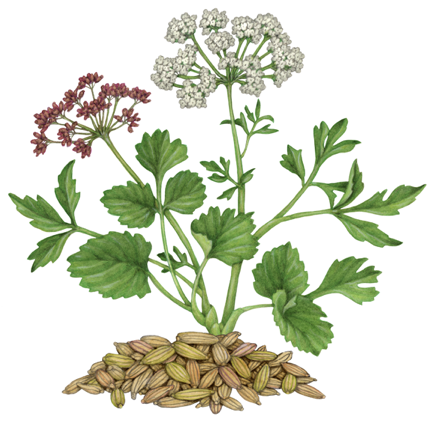
Anise has a distinct, licorice-like taste and is known for its powerful health-promoting properties and acts as a natural remedy for a wide variety of ailments.
Researchers are discovering more and more about this little seed. Here’s what’s known so far regarding its benefits:
ANISE IS RICH IN NUTRIENTS. And it doesn’t take much of this seed (about 1 tablespoon) to get a hefty amount of several important micronutrients. It’s a rich source of iron. And it contains goodly amounts of manganese, calcium, magnesium, phosphorus, potassium, and copper.
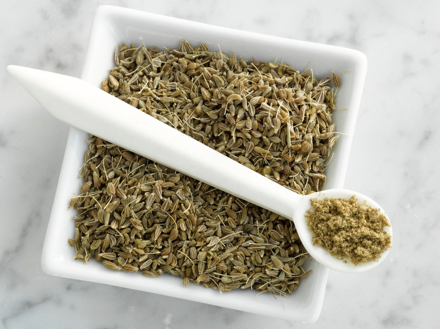
ANISE HELPS WITH DEPRESSION. Studies show that anise seed extract exhibits powerful antidepressant properties, and is especially helpful with postpartum depression. Just 3 grams of anise seed powder taken three times daily makes a world of difference. Scientists have found anise seed oil is just as effective.
ANISE HELPS PROTECT AGAINST ULCER DEVELOPMEN T. Stomach ulcers are painful sores that form in the lining of your stomach, causing symptoms like indigestion, nausea and a burning sensation in your chest. Research is showing that anise seed reduces stomach acid secretion, thus helping prevent ulcer formation and protecting cells from damage.
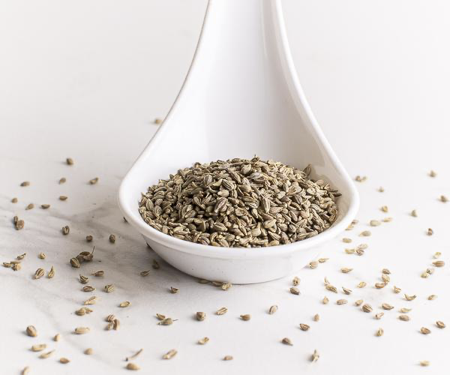
ANISE PREVENTS THE GROWTH OF FUNGI AND BACTERIA. Studies show that anise seed and its essential oil possess active ingredients (anethole, for instance) that have potent antimicrobial properties. Thus this seed is superb at preventing infections and blocking the growth of fungi and bacteria.
ANISE HELPS RELIEVE MENOPAUSE SYMPTOMS. Anise seed has been shown to mimic the effects of estrogen in your body, which reduces symptoms of menopause. Research shows that there’s almost a 75% reduction in severity and frequency of hot flashes when taking anise seed. And along with treating hot flashes, anise also helps prevent bone loss, one of the hallmark symptoms of menopause.
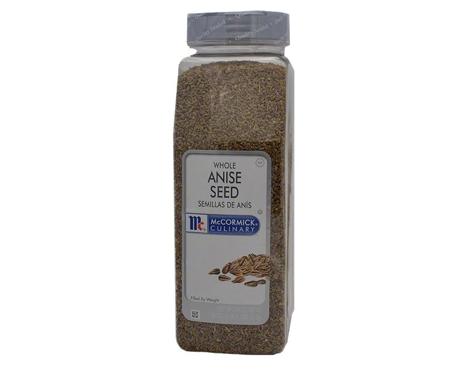
ANISE HELPS BALANCE BLOOD SUGAR. Again, anethole is the hero. It alters levels of several key enzymes which helps reduce high blood sugar. Anethole enhances pancreatic function, making insulin production much more efficient.
ANISE REDUCES INTERNAL INFLAMMATION. While inflammation is considered a normal response by your immune system to protect against injuries and infection, high levels of long-term inflammation are linked to chronic conditions, such as heart disease, cancer and diabetes. And anise seed oil has been shown to reduce inflammation as well, and prevents disease-causing oxidative damage.
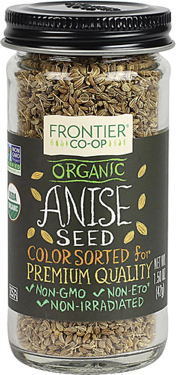
There’s one caveat, as with all natural remedies: If you have a history of any of these conditions, keep intake in moderation and talk to your doctor if you have any concerns.
As to cooking with it, it’s been used for centuries to add a distinctive flavor to baked goods (biscotti and pizzelles, for instance). Despite its rich history, it is still finding ways to reinvent itself, especially in adding a surprising depth and warmth to meat (Italian sausage, for instance), seafood, and even homemade root beer.
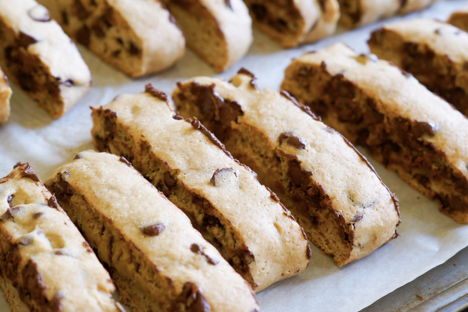
As mentioned above, anise has a similar aroma and taste profile to licorice root, but it’s flavor is also similar to fennel, star anise, and caraway. This is because all of these, while originating from different plants, contain the same organic compound called anethole, giving them their distinctively sweet, aromatic flavor.
Anise blends well with other spices and herbs like caraway, clove, mace, pink pepperberries, and tarragon. Lightly toasting the seeds in a dry skillet brings out their flavor; toasting will also help make whole seeds easier to grind. Although the leaves and stems go well in soups and salads, anise seeds, anise extract, and anise oil are by far the ingredients most frequently called for in recipes since they are the most readily available.
I’ll close this anise tutorial with a recipe that I actually experienced often in my youth. Aunt Annie loved experimenting with cookie recipes. She admitted this sesame cookie recipe had been around when she was a girl, but she added her own twist to it, making it uniquely hers. Isn’t that such a fun way to cook and bake?
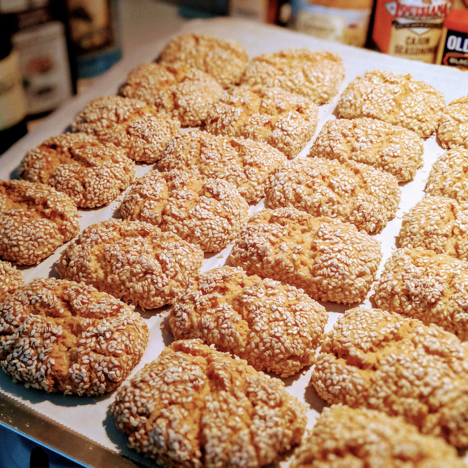

1 cup butter
1 cup sugar
1 egg room temperature
1 teaspoon anise extract
2 1/2 cups flour
1/4 teaspoon baking powder
1/8 teaspoon salt
1 teaspoon ground anise seeds
1/2 cup milk or as needed
1 cup sesame seeds
2 teaspoons anise seeds
Directions:
Add Recipe to Cook'n

Anise has a distinct, licorice-like taste and is known for its powerful health-promoting properties and acts as a natural remedy for a wide variety of ailments.
Researchers are discovering more and more about this little seed. Here’s what’s known so far regarding its benefits:
ANISE IS RICH IN NUTRIENTS. And it doesn’t take much of this seed (about 1 tablespoon) to get a hefty amount of several important micronutrients. It’s a rich source of iron. And it contains goodly amounts of manganese, calcium, magnesium, phosphorus, potassium, and copper.

ANISE HELPS WITH DEPRESSION. Studies show that anise seed extract exhibits powerful antidepressant properties, and is especially helpful with postpartum depression. Just 3 grams of anise seed powder taken three times daily makes a world of difference. Scientists have found anise seed oil is just as effective.
ANISE HELPS PROTECT AGAINST ULCER DEVELOPMEN T. Stomach ulcers are painful sores that form in the lining of your stomach, causing symptoms like indigestion, nausea and a burning sensation in your chest. Research is showing that anise seed reduces stomach acid secretion, thus helping prevent ulcer formation and protecting cells from damage.

ANISE PREVENTS THE GROWTH OF FUNGI AND BACTERIA. Studies show that anise seed and its essential oil possess active ingredients (anethole, for instance) that have potent antimicrobial properties. Thus this seed is superb at preventing infections and blocking the growth of fungi and bacteria.
ANISE HELPS RELIEVE MENOPAUSE SYMPTOMS. Anise seed has been shown to mimic the effects of estrogen in your body, which reduces symptoms of menopause. Research shows that there’s almost a 75% reduction in severity and frequency of hot flashes when taking anise seed. And along with treating hot flashes, anise also helps prevent bone loss, one of the hallmark symptoms of menopause.

ANISE HELPS BALANCE BLOOD SUGAR. Again, anethole is the hero. It alters levels of several key enzymes which helps reduce high blood sugar. Anethole enhances pancreatic function, making insulin production much more efficient.
ANISE REDUCES INTERNAL INFLAMMATION. While inflammation is considered a normal response by your immune system to protect against injuries and infection, high levels of long-term inflammation are linked to chronic conditions, such as heart disease, cancer and diabetes. And anise seed oil has been shown to reduce inflammation as well, and prevents disease-causing oxidative damage.

There’s one caveat, as with all natural remedies: If you have a history of any of these conditions, keep intake in moderation and talk to your doctor if you have any concerns.
As to cooking with it, it’s been used for centuries to add a distinctive flavor to baked goods (biscotti and pizzelles, for instance). Despite its rich history, it is still finding ways to reinvent itself, especially in adding a surprising depth and warmth to meat (Italian sausage, for instance), seafood, and even homemade root beer.

As mentioned above, anise has a similar aroma and taste profile to licorice root, but it’s flavor is also similar to fennel, star anise, and caraway. This is because all of these, while originating from different plants, contain the same organic compound called anethole, giving them their distinctively sweet, aromatic flavor.
Anise blends well with other spices and herbs like caraway, clove, mace, pink pepperberries, and tarragon. Lightly toasting the seeds in a dry skillet brings out their flavor; toasting will also help make whole seeds easier to grind. Although the leaves and stems go well in soups and salads, anise seeds, anise extract, and anise oil are by far the ingredients most frequently called for in recipes since they are the most readily available.
I’ll close this anise tutorial with a recipe that I actually experienced often in my youth. Aunt Annie loved experimenting with cookie recipes. She admitted this sesame cookie recipe had been around when she was a girl, but she added her own twist to it, making it uniquely hers. Isn’t that such a fun way to cook and bake?

Aunt Annie's Sesame Cookies
Ingredients:
1 cup butter
1 cup sugar
1 egg room temperature
1 teaspoon anise extract
2 1/2 cups flour
1/4 teaspoon baking powder
1/8 teaspoon salt
1 teaspoon ground anise seeds
1/2 cup milk or as needed
1 cup sesame seeds
2 teaspoons anise seeds
Directions:
1. Preheat the oven to 350 degrees F.
2. In a large bowl, cream together the butter and sugar until smooth. Beat in the egg and anise extract until well blended. Sift together the flour, baking powder and salt; stir into the butter mixture until well incorporated. If you are using a stand mixer, let the dough mix for another minute to add lightness to the dough. The dough will be soft, but will hand roll easily.
3. Pinch off pieces of dough slightly smaller than a walnut, and roll them into small logs. Dip in milk, then roll in sesame seeds. Place cookies one inch apart on a cookie sheet. Cookies will not spread very much.
4. Bake for 12 to 15 minutes in preheated oven, or until bottom and sides of cookies are lightly toasted. Remove from cookie sheets to cool on wire racks. Store in an airtight container at room temperature.
2. In a large bowl, cream together the butter and sugar until smooth. Beat in the egg and anise extract until well blended. Sift together the flour, baking powder and salt; stir into the butter mixture until well incorporated. If you are using a stand mixer, let the dough mix for another minute to add lightness to the dough. The dough will be soft, but will hand roll easily.
3. Pinch off pieces of dough slightly smaller than a walnut, and roll them into small logs. Dip in milk, then roll in sesame seeds. Place cookies one inch apart on a cookie sheet. Cookies will not spread very much.
4. Bake for 12 to 15 minutes in preheated oven, or until bottom and sides of cookies are lightly toasted. Remove from cookie sheets to cool on wire racks. Store in an airtight container at room temperature.
Recipe formatted with the Cook'n Recipe Software from DVO Enterprises.
Sources:
- www.pinterest.com
- www.thespruceeats.com
- www.savoryspiceshop.com
- www.spiceplace.com
- www.vitacost.com
- www.thepioneerwoman.com
 Alice Osborne
Alice Osborne
Weekly Newsletter Contributor since 2006
Email the author! alice@dvo.com
